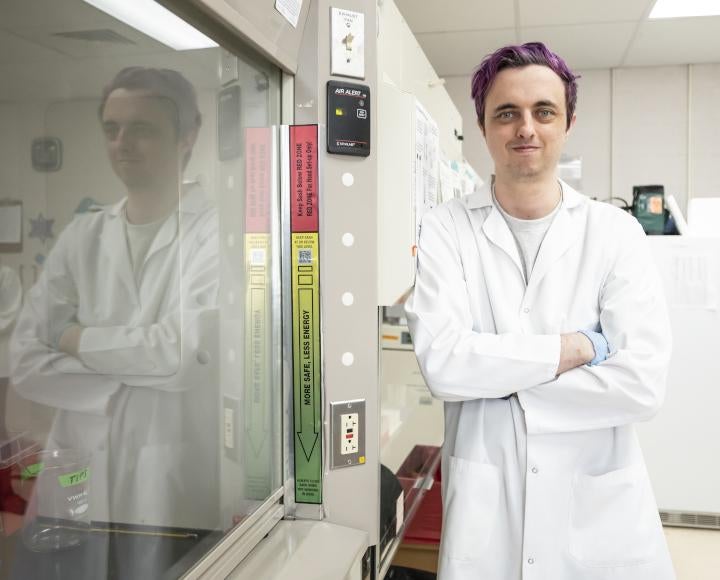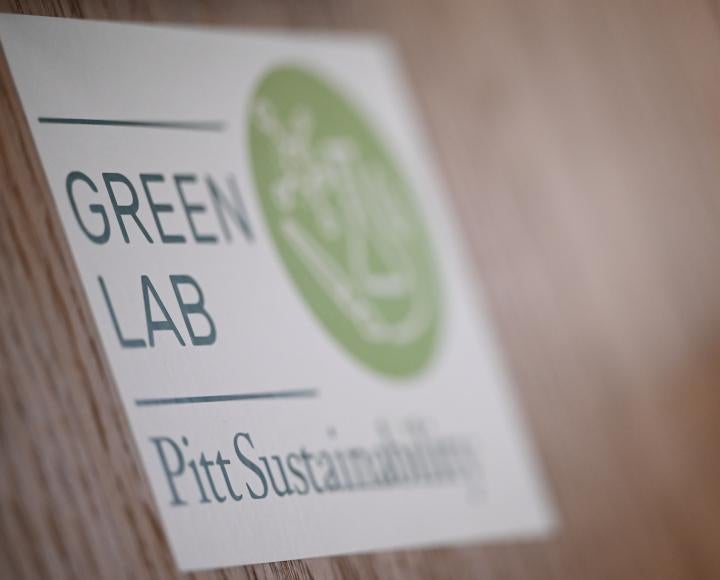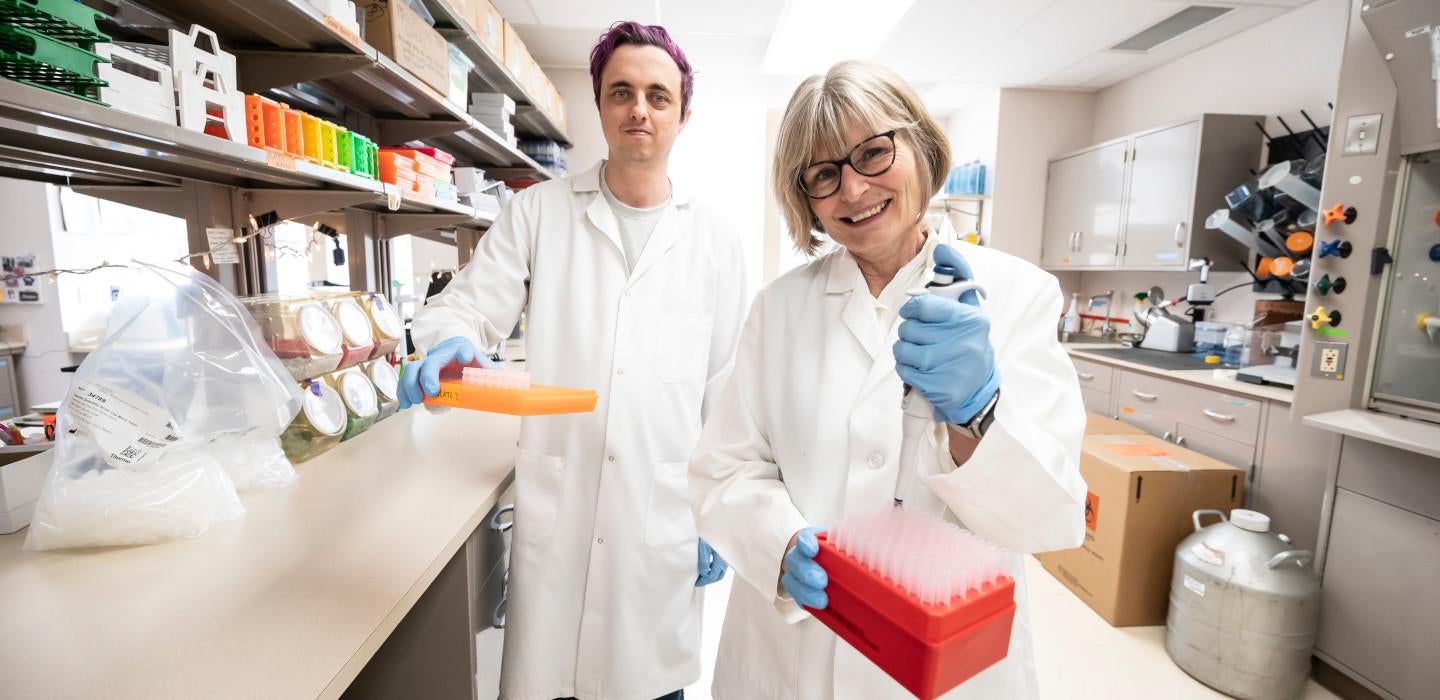
Subscribe to 51ľ«Ć·ĘÓƵwire Today
Get the most interesting and important stories from the 51ľ«Ć·ĘÓƵ.is dedicated to sustainability at home. But that commitment has been difficult for her to square with more than two decades of running a research lab, which requires consumption — from single-use objects like gloves and pipette tips to energy-intensive tools like computers and fume hoods — that’s hard if not impossible to avoid.Ěý
Now she and her lab manager Zak Hutchinson (pictured above) have joined a group of researchers in 51ľ«Ć·ĘÓƵ Sustainability’s who are finding ways to reduce the environmental impact of their research.
“Running a wet lab there is an enormous amount of waste, particularly plastics. I would come into work and question whether we could do better,” said Marsland, a professor of psychology in 51ľ«Ć·ĘÓƵ’s Kenneth P. Dietrich School of Arts and Sciences. “This program is encouraging labs to be mindful and to start to think about sustainability and the environment, which is a really positive change.”
The program has its origins with the Green Office program in the in 2019. That has since moved over to , which added a program focused on research labs. Both have seen substantial buy-in from researchers across the University.
“We’re up to 24 labs, and we expect that to grow significantly over the course of the summer with the start of the Office of Sustainability in the Health Sciences,” said , sustainability engagement manager for the Office of Sustainability and head of the Green Labs program. “That’s almost 200 people, all committing to sustainable practices in research.” The parallel Green Offices program adds close to another 600 more.
[Read more about the launch of 51ľ«Ć·ĘÓƵ’s Office of Sustainability in the Health Sciences.]
Labs can achieve four different designations depending on their progress, from “seed” to “sustainable oak.” 51ľ«Ć·ĘÓƵ Sustainability provides a that labs can use to start their planning process, offering options for labs to become greener across areas like purchasing, energy use, waste and fostering a culture of sustainability. The program also has pilots in place for recycling everything from to .
Potoczny works with labs to advise and connect them with the proper resources. Some of the first steps that many labs take are simple shifts like ensuring fume hoods are closed and computers are shut off when not in use. Some more mature green labs are considering bigger changes like upgrading equipment and even sharing with other research groups.
The program, based on self-assessments, takes into account the enormous variety of research that happens at 51ľ«Ć·ĘÓƵ. But the first step that Potoczny suggests is the same no matter what they study.
“I always recommend folks start with engagement actions: Get your team on board and get organized,” she said. “That’s going to give you the foundation, and you’ll find out who in your lab might be an expert or really passionate about different aspects of sustainability.”


In the Marsland Lab, that passionate individual was Hutchinson, who as lab manager has spearheaded the group’s recent efforts to become more sustainable. Along with educating lab members on efficient use of equipment, he recently attended a supplier show held by 51ľ«Ć·ĘÓƵ Sustainability where he learned about recyclable and sustainable alternatives to equipment the lab uses.
Hutchinson also looked for resources on the Green Labs website and worked with Potoczny to find alternate ways of purchasing what the lab does use. For instance, he was able to procure items in smaller quantities and prevent waste by purchasing from the rather than a large supplier. Almost right away, the lab qualified for the second tier of green labs, a “sprout.”
“Some of the things you can do to make your lab more sustainable are there waiting for you,” he said. “It’s just a matter of having the information and knowing where to look.”
Marsland and her lab study how the environment in which a person lives shapes their health over the course of a lifetime, making them more vulnerable to chronic inflammatory and respiratory diseases. The impact of early-life environments, the group has found, can be seen in a person’s biology even as an adult.
“There are biological pathways that actually link all these exposures to risk of disease,” said Marsland. “It’s how these factors that we broadly call social determinants of health actually function to impact health.”
And decades of work examining those connections have, for Marsland, highlighted necessity of environmental stewardship. If early exposures to pollutants can accelerate biological aging and disease, that’s just one more reason to make sure that her lab is part of the sustainability solution.
“Education is increasing, and awareness is increasing,” she said. “There’s a long way to go, but I think these are things that will ultimately inspire and bring about change.”
Ěý
Photography by Aimee Obidzinski


